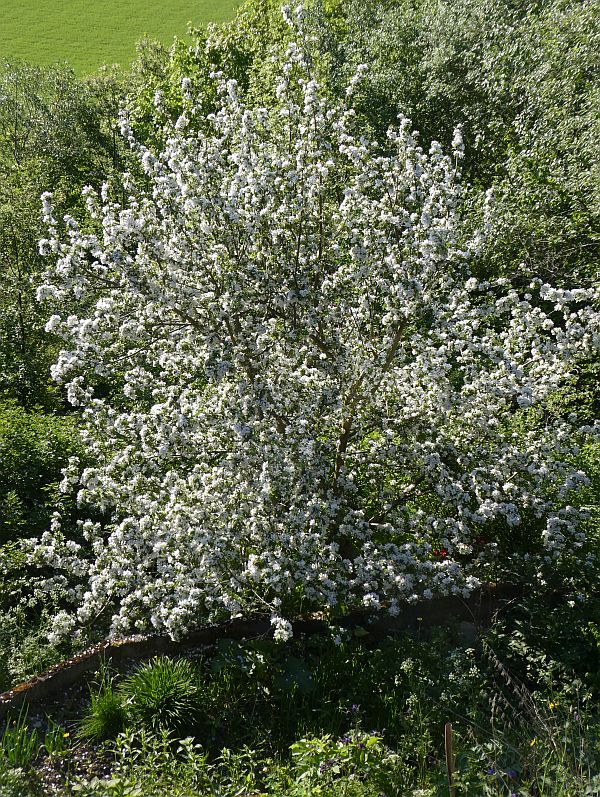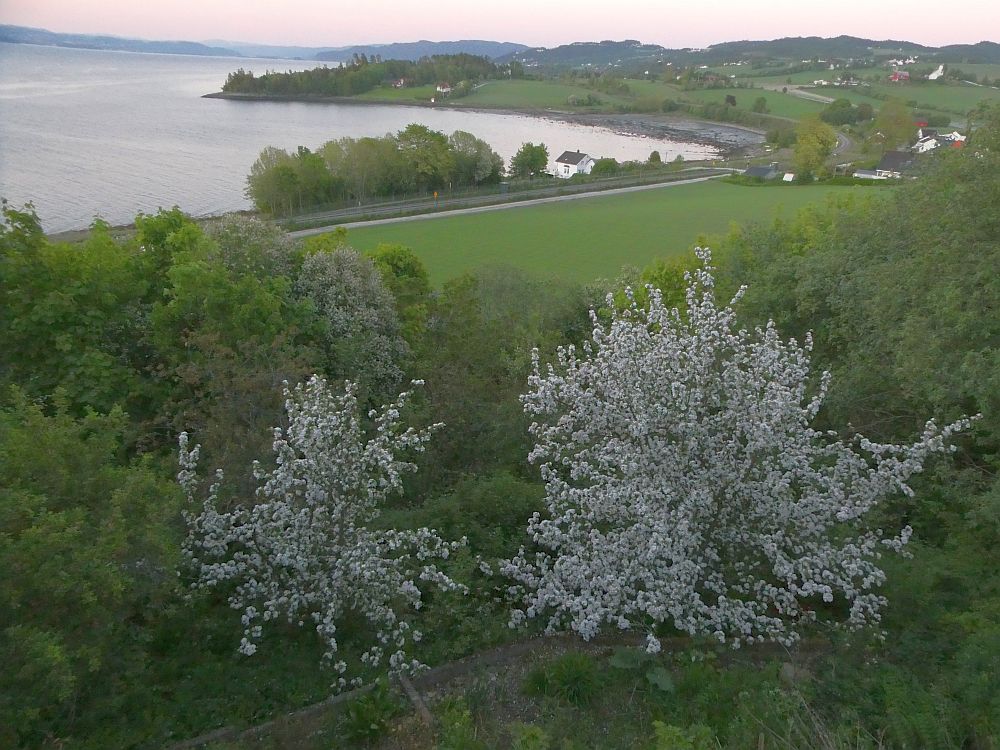As far as possible, I like to eat fresh fruit and berries from the garden, usually with muesli for breakfast. I’ve been self-sufficient for many years, mostly home grown but augmented with wild foraged bilberries / blåbær. From when the cellar stored apples are finished, usually in April to the first haskaps and strawberries are ready, we go over to rehydrated dried fruit. Currently these are the berries and fruit we are eating now in autumn as the first frosts threaten:
1. Elaeagnus umbellata (autumn olive; Japansk sølvbusk)
2. Rubus ‘Sonja’ (blackberry; bjørnebær) – the only blackberry cultivar I am aware of that is hardy enough for our climate, not freezing in winter. Productive with tasty berries too!
3. Ribes divaricatum “Worcesterberry” (Worcesterbær)
4. Ribes biebersteinii (Ribes petraeum var. biebersteinii) (black redcurrant; svartrips); isn’t truly black, more dark purple coloured; hang a long time on the bushes and don’t seem to be taken by thrushes (like blackcurrants)
5. Malus domestica (apple; epler) – eating the windfalls that won’t store long.

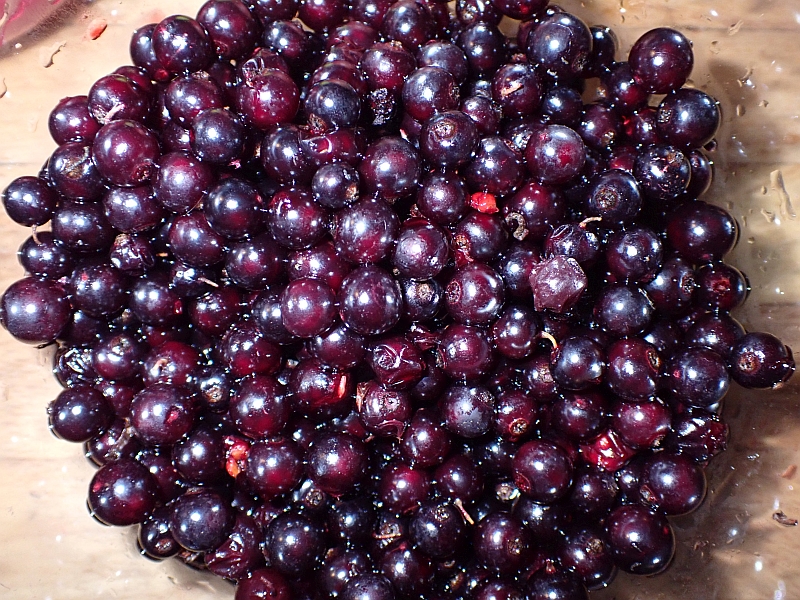
Category Archives: Berries
North American Forest Garden
On the Eastern boundary at the Væres Venner community garden in Trondheim, I wanted to develop a small forest garden devoted to edible plants of the first peoples in North America. Two years ago I planted two of them which now have berries for the first time!
They are
a) Purple flowering raspberry / rosebær (Rubus odoratus), a species which is often planted as an ornamental in Norway, usually a single clone so most are not aware that is has tasty fruit. With this in mind I germinated seed from the NARGS seed list, sown in January 2022 which germinated late May the same year and were planted out in May 2023, so just two years from seed to the first berries.
b) Black hawthorn / Douglashagtorn (Crataegus douglasii): this is given 4 out of 5 stars at https://pfaf.org/User/plant.aspx… and after my first taste I agree with their assessment: they would make a good addition to a mixed fruit salad. No wonder this berry was widely used by native americans including the Cheyenne.
I now plan to prepare the area around the trees for perennial vegetables from the same area!
More fruit and berry leather
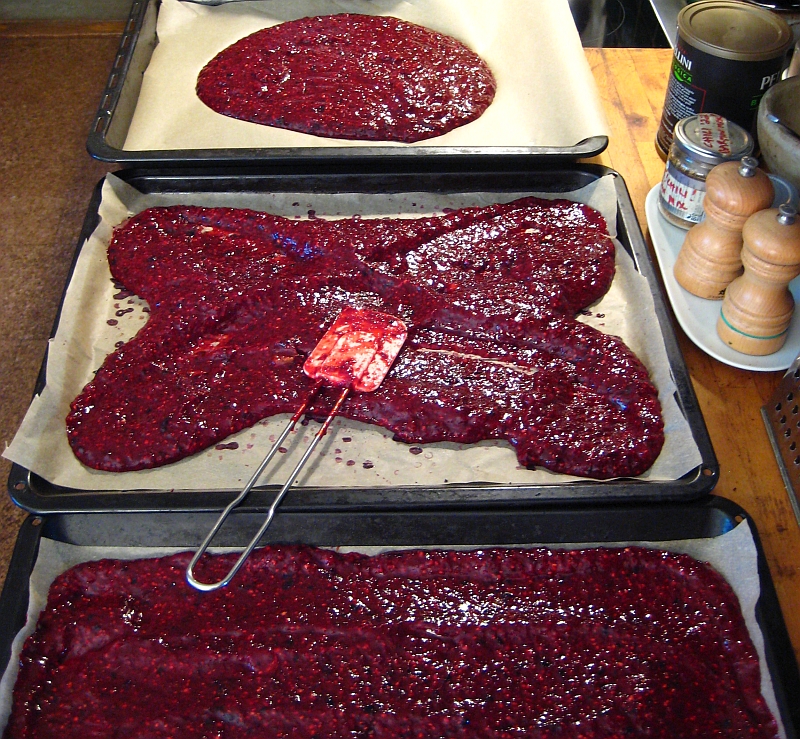
July berries
Various berries harvested late July at home in the Edible Garden and in the Væres Venner Community Garden. More information in the picture captions. These were either eaten fresh for breakfast with muesli or were made into mixed fruit leather!
Glencoe-like fruit from Black raspberry seed!
During early 2019, I sowed seed of black raspberry, Rubus occidentalis Ex-Black Hawk. The seed were harvested from some plants in my garden received originally as seed from Seed Savers Exchange in 2003. They germinated around 26th May 2021 and I planted about 20 quite close together with the thought of later moving them to a permanent place. That never happened and the plants grew large and started producing last year.
To my surprise I discovered that some of the berries, presumably from one of the plants, were very different and reminiscent of the hybrid with red raspberry (Rubus idaeus) “Glencoe”.
About ‘Glen Coe’: “this is the result of a cross-breeding between Rubus idaeus ‘Glen Prosen’ – a local Scottish variety with red fruits – and R. occidentalis ‘Munger’, a black-fruited variety from North America that was introduced in 1897 and extensively cultivated on more than 600 hectares in Oregon. This hybrid was developed by the Scottish Crops Research Institute, an agricultural research centre near Dundee (now integrated into the James Hutton Institute). Introduced to the market in 1989, ‘Glen Coe’ still surprises with the unique colour of its fruits, which is intermediate between its two parents.”
Autumn Olives
The 3 autumn olive / Japansk sølvbusk (Elaeagnus umbellata) bushes at the Væres Venner Community Garden are now producing well. This is about 2/3 of the berries and I hope to harvest the remainder tomorrow. Apart from a few Aronia and Worcesterberries and apples we are near the end of the fresh fruit / berry harvest. See also my blog post “Late Fresh Berries” here: https://www.edimentals.com/blog/?p=29619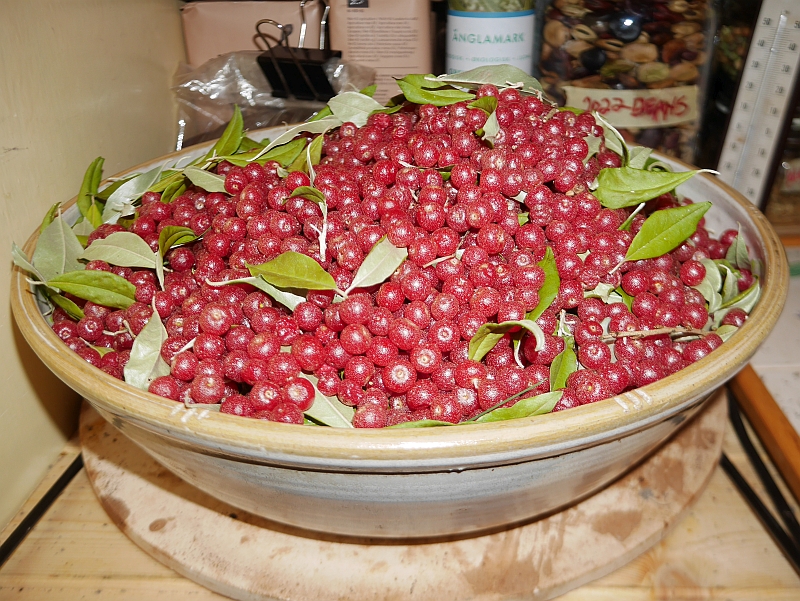 …and two pictures of the final fruit leather. Like sour cherries, they become sweeter on drying. Delicious!
…and two pictures of the final fruit leather. Like sour cherries, they become sweeter on drying. Delicious!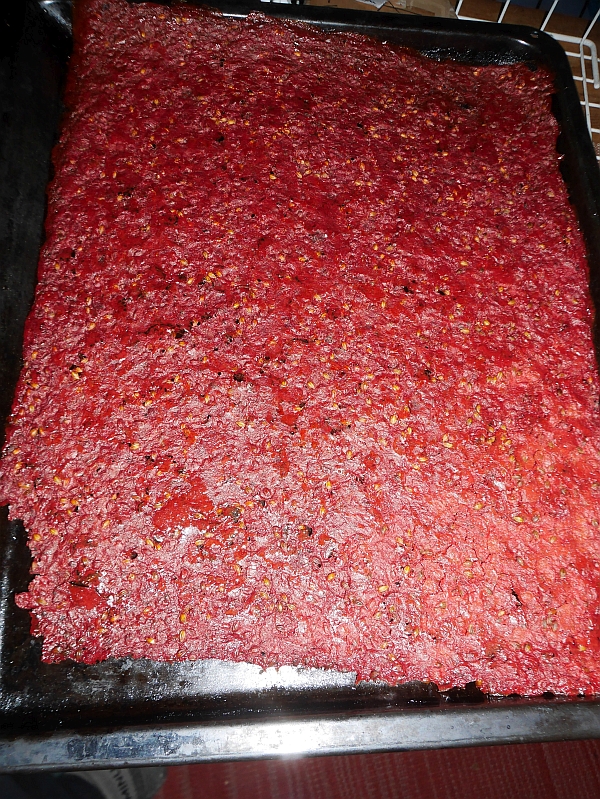

Redwings
Eurasian redwings (rødvingetrost) seem to becoming more common in winter here. I now have 7 records of single birds since 2015 (December to March) and today there were 4 together feeding briefly with fieldfares (gråtrost) on guelder rose (krossved) berries! Interestingly, 27th December seems to be the best day to see redwings here as I now have records in 2015, 2017 and 2021 on this day!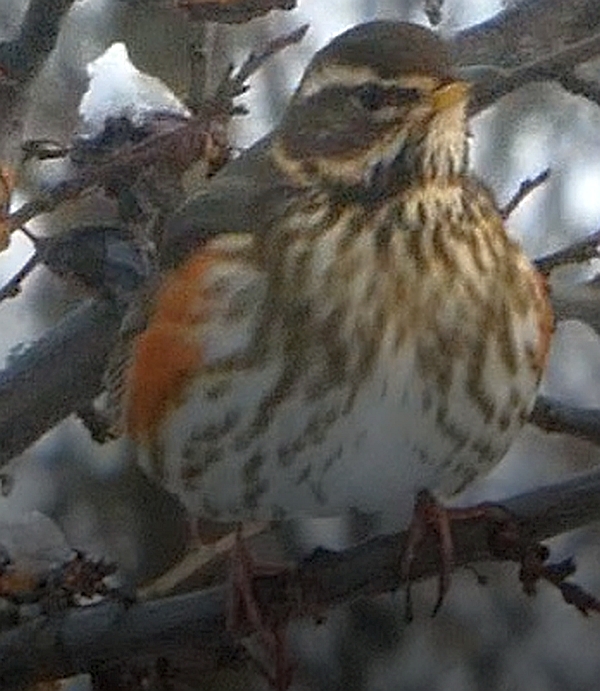
Second visit from Pine Grosbeaks
Two years ago there was an irruption of pine grosbeaks (konglebit) in Norway and I finally got to see this species in the garden for the first time although only briefly (see https://www.edimentals.com/blog/?p=23766). Yesterday, they turned up again, a flock of 17 birds (there’s an invasion again across the country). I thought initially they were bullfinches (dompap) to which they are closely related (bullfinches also feed sometimes on rowan). Poor light conditions as the sun was still below the horizon and -10C. As I was filming a couple of the birds flew to about 1m from me (they are unafraid of humans). Then, five minutes later they were gone.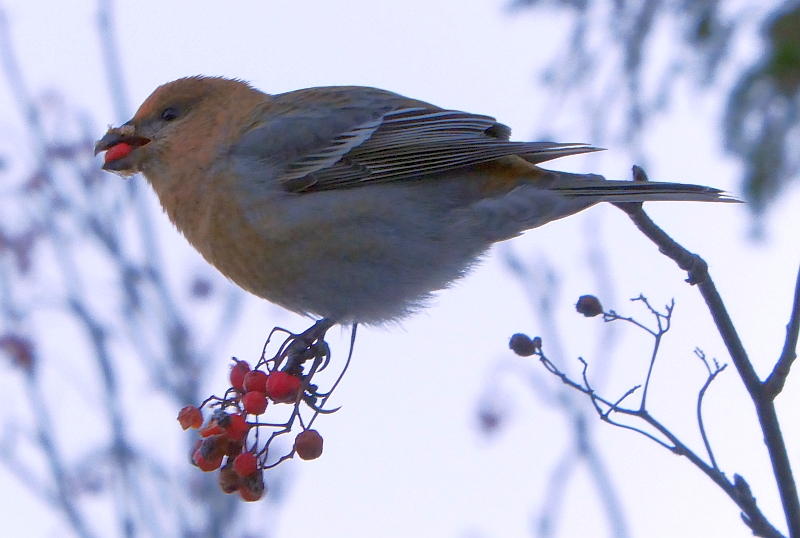
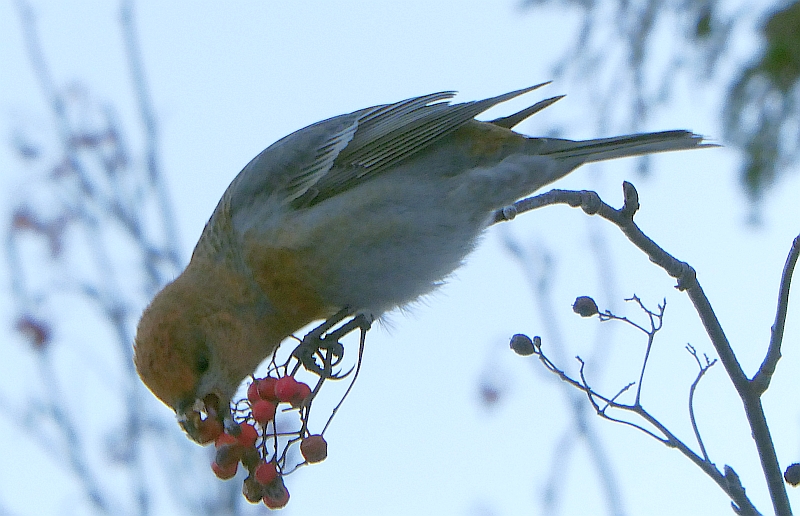

Late Fresh Berries
I love the seasonality of fruit and berries and one group of berries that can be harvested in October and November are particularly valuable when you only eat fresh and, later in the winter / spring, dried fruit and berries. The blackberries (bjørnebær) are finished now and we will be eating fresh stored apples now until at least April. This week after the first heavy frost I was able to continue harvesting Worcesterberries (a selection of Ribes divaricatum) at the bottom of the picture, Aronia prunifolia (purple chokeberry) at left and autumn olives / Japansk sølvbusk (Elaeagnus umbellata)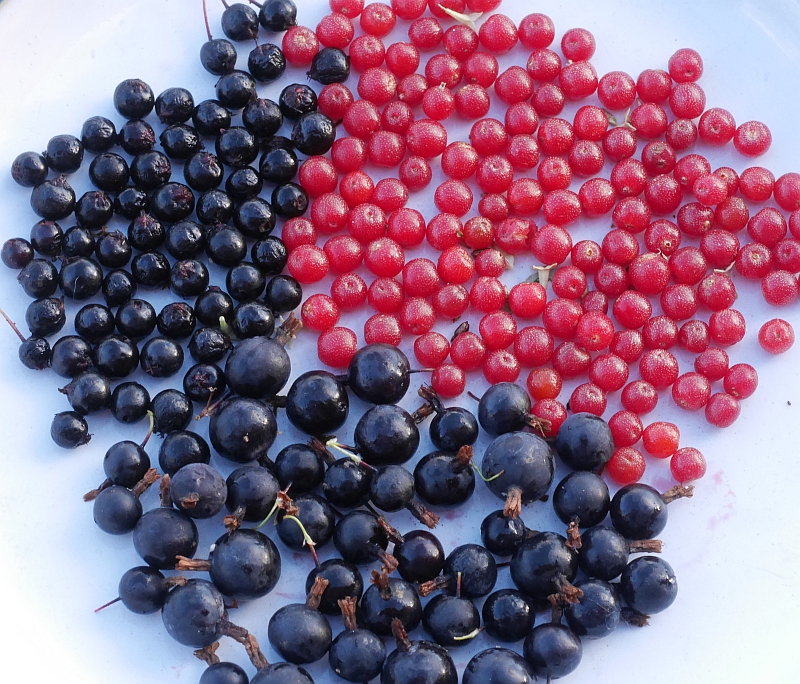
 1st November 2023: The Autumn Olive is really producing well now! Still some to havest in the community garden!
1st November 2023: The Autumn Olive is really producing well now! Still some to havest in the community garden!
Dried fruit salad
The fresh fruit season approaches rapidly as the first fruit ripens…wild strawberries (markjordbær) and haskaps (Lonicera edulis). Since the fresh apples ran out early April we’ve been eating delicious rehydrated dried fruit salad every day. We mix different flavours (sour and bitter and sweet) in the same way as in mixed salads. Here are the recipe and ingredients in this year’s “Summer in a Bowl” mix: apples, wild bilberries, raspberries (from the hills and garden), yellow raspberries, redcurrants, saskatoons (Amelanchier), rhubarb, sour cherries and gooseberries! We both made mixed fruit leather and dried the berries as they were (mixed together in the rehydrated mix). I never buy fruit and never use sugar for preserving and don’t own a freezer (by choice).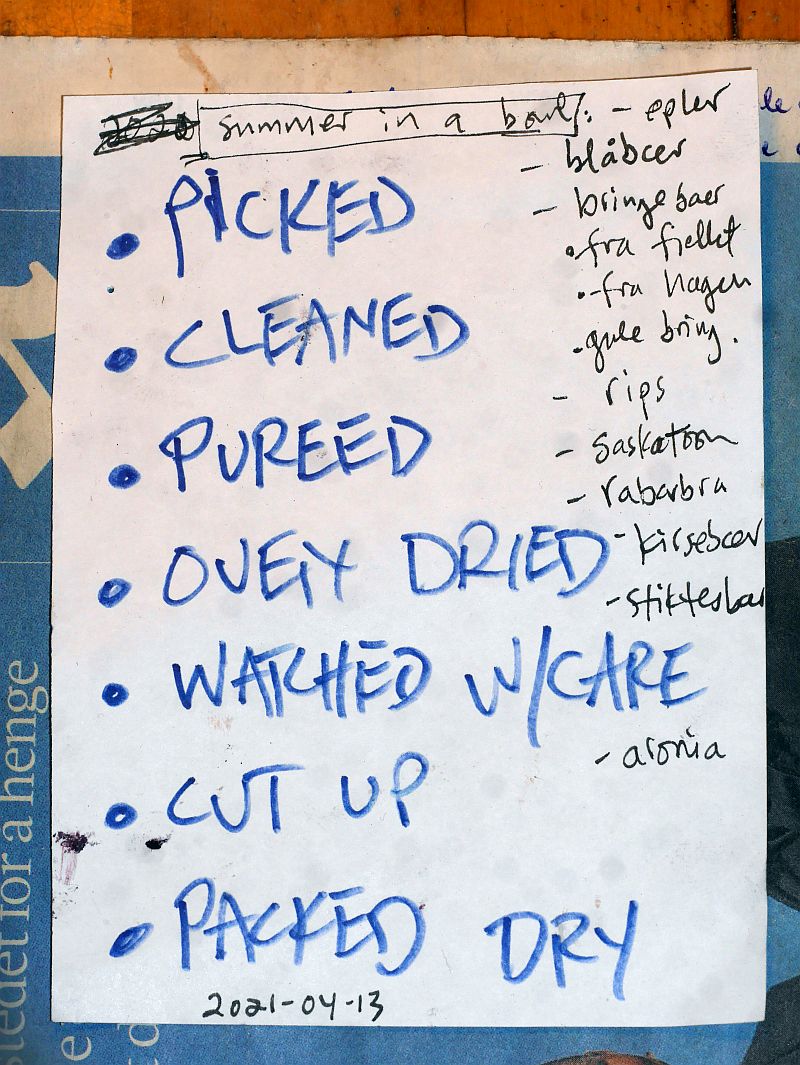 Rehydrated fruit mix for breakfast every day is delicious:
Rehydrated fruit mix for breakfast every day is delicious:
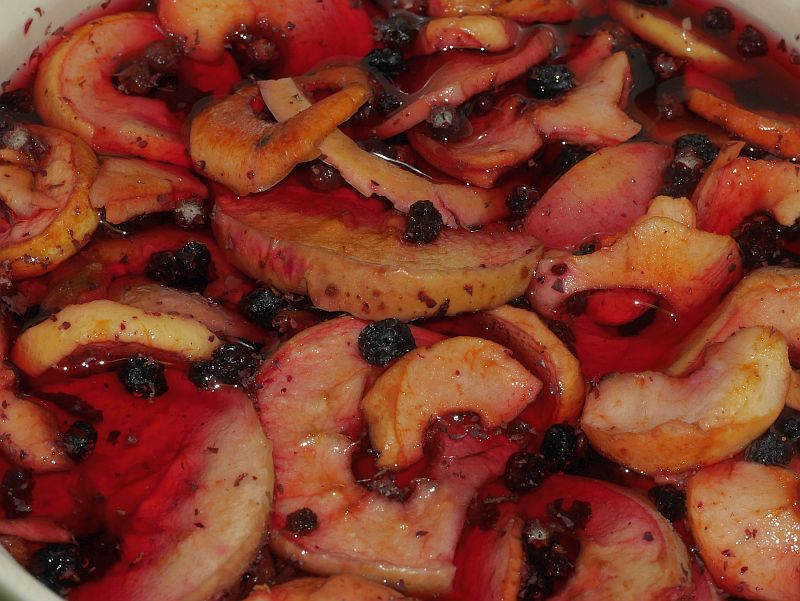
The first ripening berries of 2021 (wild strawberries and haskaps):

…and the 2021 fruit harvest is very promising with both plums, cherries and apples all covered in flowers in May (pictures and video of the biggest apple tree – Aroma)